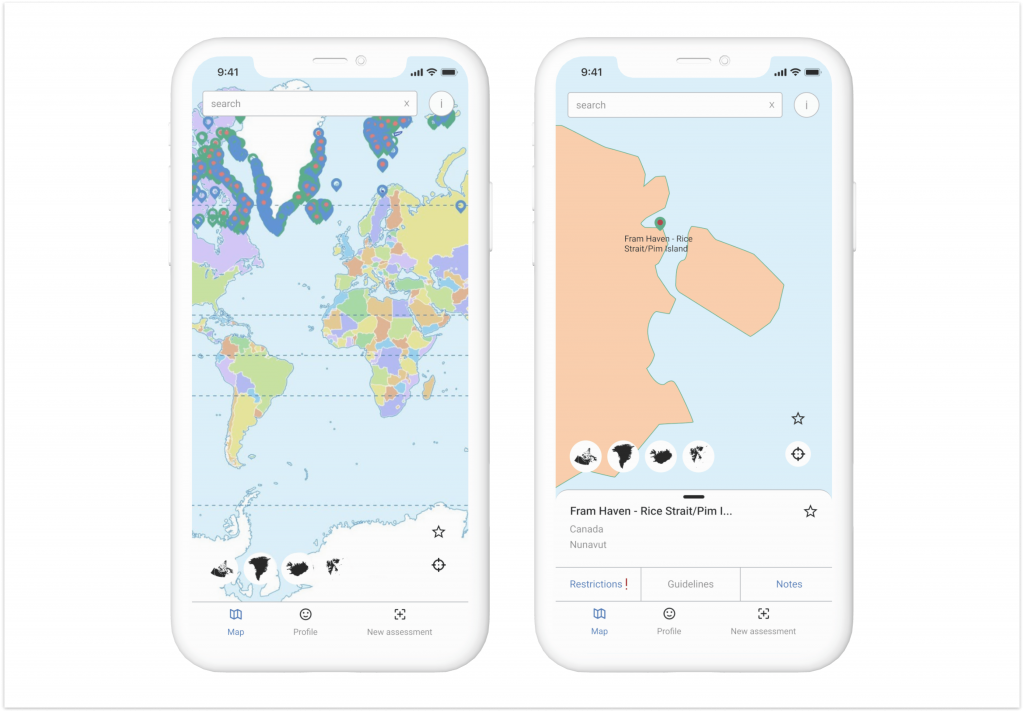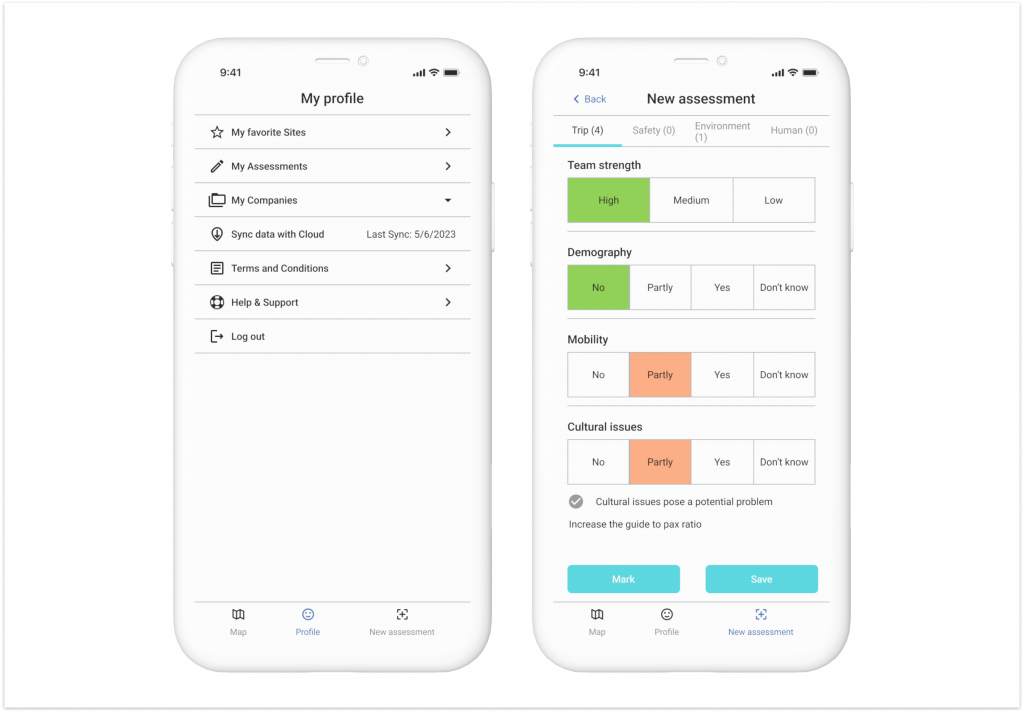Highlights
- Full offline mode
- Built-in guidelines
- Maps with geotags
Technologies Used: React Native, Python, Django, Redux, SQLight
Methodology: Scrum
Customer
The customer is a global organization involved in exploring Arctic regions. The expedition’s geographical area covers Arctic regions north of 60 degrees latitude and embraces six archipelagos.
Need
The client contacted HQSoftware to optimize an out-of-date version of the application for exploring the Arctic region and collecting data about the area’s resources. The application was to be developed for iOS and Android. The customer requested an update to the previous Ionic front-end version in React Native, leaving out the Angular backend, with some refined modifications.
Solution
The resulting solution is a cross-platform application that allows expedition members to download a region-related suite to interact with offline. The suite includes:
- Maps with all the necessary geotags—more than 1000 of them;
- A set of questionnaires with four sections to answer: safety, environment, human, and trip;
- Built-in guidelines: specific landing instructions, rules of behavior in extreme conditions, etc.
The cross-platform mobile app enables expedition members to discover Arctic region resources, making it possible to observe all the geotags on the map within the particular area and track exploration routes. The geotags contain information about restrictions and available activities within certain areas.
The expedition member can choose a map of a specific archipelago, select a point, and plan a trip, depending on the information provided. To safely plan an expedition, he can use guidelines and step-by-step recommendations on how to respond to dangerous situations or extreme weather conditions.

Using the app, expedition members fill in the questionnaires to evaluate various aspects of the region being investigated and submit notes in case any specific information should be highlighted. Once a stable Internet connection is available, the user can manually synchronize all data, which is then transferred to the cloud for further analysis.

Complying with crucial customer requirements, the solution works seamlessly in offline mode and features a user-friendly interface for expedition members to use it while wearing special gloves.
The application includes a network manager that continuously runs in the background and adjusts the priority of offline/online modes based on whether Internet access is turned on or off.
Challenge
To begin the project, the customer provided our development team with the previous version of the application. Our high-ranked specialists had to work without any documentation, relying on the outdated version of the application and the customer’s requirements. Additionally, the team at HQSoftware had to address the following challenges:
- Make the offline mode fully functional.
As the application needed to be usable in regions with no Internet coverage, it needed to work in full offline mode with no failures. Answers to questionnaires must be saved on the device, generated in PDF, and shared in the offline mode as well.
Our experts implemented the offline mode by making it possible to store data in the file system. The system structure was developed to accommodate the application’s hierarchy, minimizing requests and the memory required for storage.
Also, it was difficult to implement the online map system, as it was important for users to be able to zoom in and out and move around on the map. To enable this, the app contains a minimap that links to the main map and adjusts its configuration based on the open screen, in order to optimize resources.
- Develop manual data synchronization mode.
Expedition members needed to manually synchronize discovered information whenever they reached an Internet connection, in two ways: from the application to the device, and from the device to the admin panel.
All requests are processed from both sides. To avoid braking and slowing down the queue for drawing the interface, local actions are handled first. Then, requests are made with information that will be transmitted once the device is connected to the network and the synchronization button is pressed.
- Speed up the download of PDF documents.
To simplify downloading huge amounts of PDF files, which took about ten minutes, our team incorporated batch loading. We have optimized complete data synchronization: from the backend to the device and from the device to the backend.
Within three months, our developers advanced the app to fully functional offline mode, implemented manual data synchronization, and optimized the user experience.
Team
1 Project Manager
1 React Native Developer
1 DevOps Engineer
1 QA Engineer
Results
Partnering with HQSoftware, the customer received an optimized application that enables expedition members to discover Arctic region resources.
Fully operational in offline mode, the solution offers a set of questionnaires, maps with geotags, and step-by-step guidelines. Customized to the needs of an expedition, the system features a handy interface that allows it to work in critical weather conditions that require wearing specialized gloves. The resulting solution is 90% faster than the outdated one, providing complete and safe downloading of PDF files.
Interested in mobile development services? Contact us and get a free consultation.
Check Out Other Works
See How We Reach Goals
We are open to seeing your business needs and determining the best solution. Complete this form, and receive a free personalized proposal from your dedicated manager.

Sergei Vardomatski
Founder



